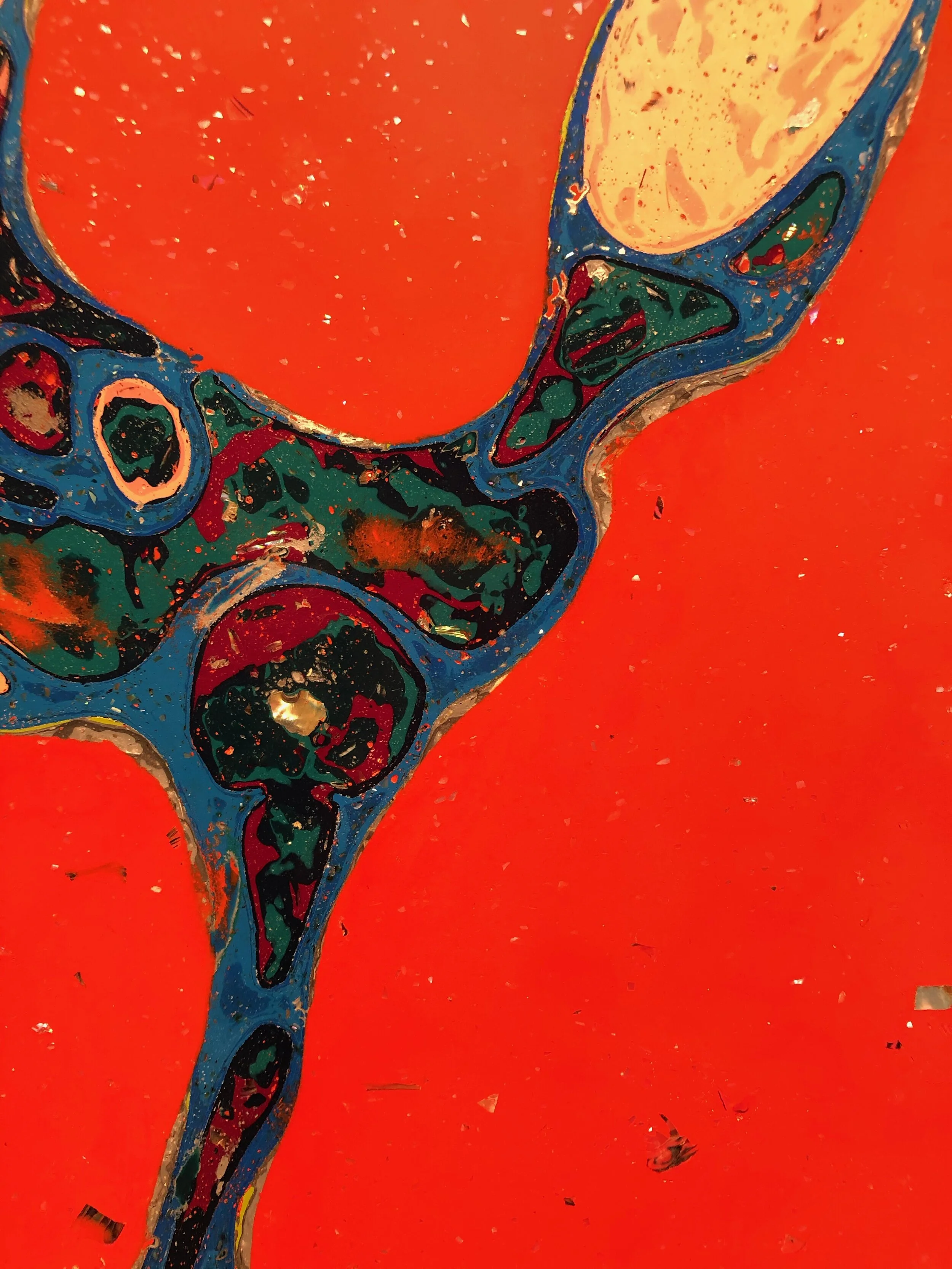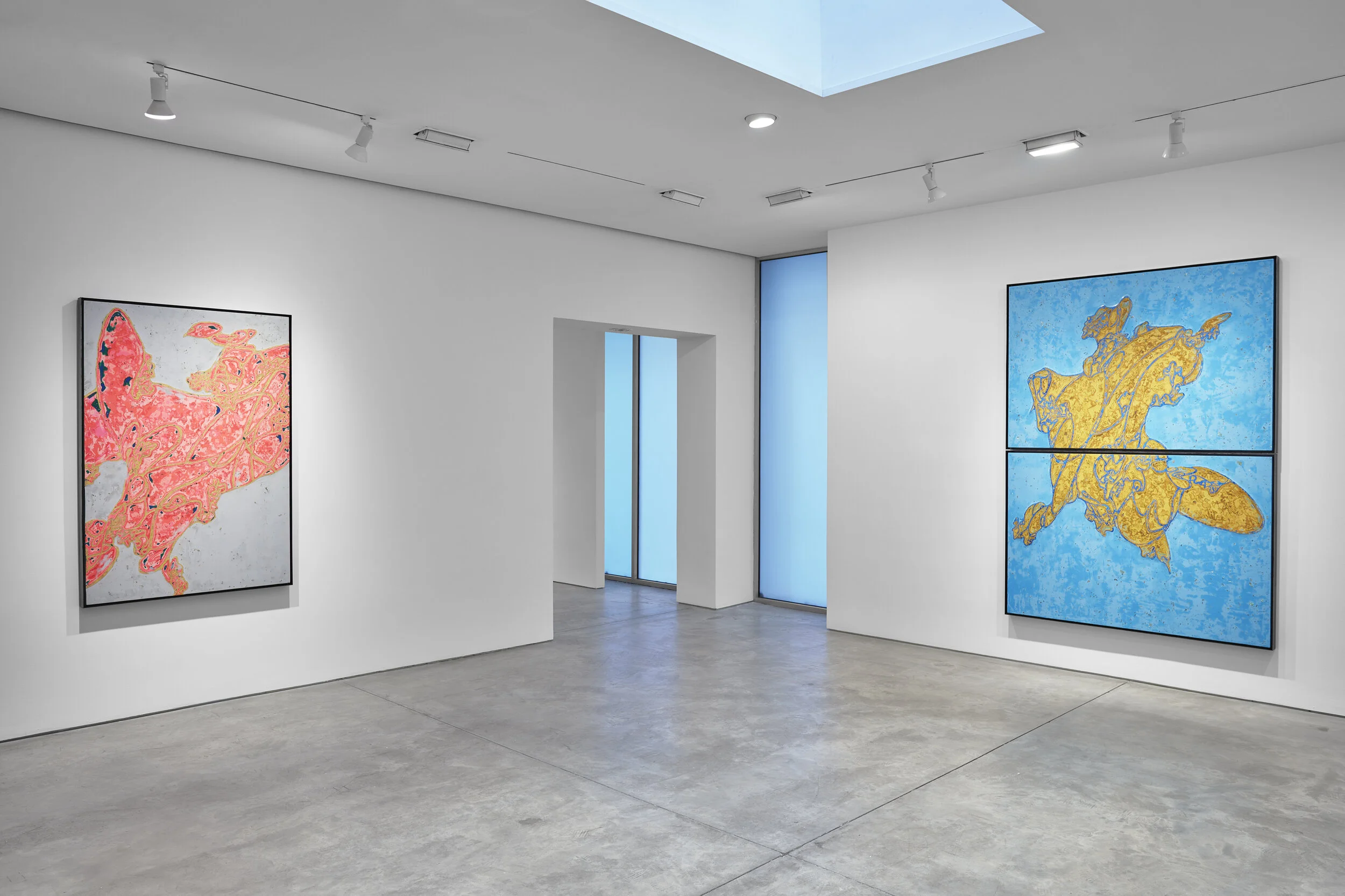Looking Forward
Lee Bul at Lehmann Maupin
Lee Bul’s Interlude: Perdu, currently on view at Lehmann Maupin, is certainly not the Korean artist’s most provocative body of work (she has been known to use rotting fish in her sculpture, creating a multisensory (and poignant) confrontation with degredation), but this show’s deceptively beautiful finish points towards a complexity initially obscured by the appeal of its intense colors (but amply furnished by the show’s press release).
Perdu XXV, 2019, mother of pearl, acrylic paint on lacquered wooden base panel, steel frame triptych, 64.29 x 131.22 x 2.6 inches (framed). Courtesy Studio Lee Bul and Lehmann Maupin, New York, Hong Kong, and Seoul.
Both from a distance and up close I would’ve sworn these works were made of cloisonné enamel, a process in which powdered glass is melted to form a single shining plane of color, held in place by metal dams that contain the molten glass and give it form. Not so, as the most interesting material element here is flecks of mother of pearl, which are scattered across what turns out to be simply acrylic paint.
Regardless of their material, they provide visual interest at any distance, but are perhaps most worthy at their absolute closest, as the offset color, which seems to pool in between dribbles from the brush, is mottled and as beautiful as the marbling of Venetian endpapers.
Detail from Perdu XVIII, 2019
Colors play a particular role in determining interpretation here. The deep red of one form leaping across a turmeric ground brings me to an evening of flamenco in the fading light of a Spanish evening, while a royal blue ground studded with mother of pearl feels celestial, almost heavenly. But it seems that these are not the associations we are supposed to make with the dystopian Lee and her grander reputation as an art world Cassandra, using her oeuvre to point to impending disaster.
Once you’ve been primed by the gallery’s literature, it’s not terribly hard to see how these works relate to the rest of the artist’s cyborgphilic oeuvre, but discussion of how these futuristic biomorphs might relate to our bleak future hardly seems necessary. (And as with much abstract art, only so much interpretation in a certain direction can be tolerated before someone inevitably calls bullshit.) Their presence—as well as the way Lehmann Maupin has lit them in low light—seems to be enough to communicate their importance.
Lee Bul, Interlude: Perdu. Installation view, Lehmann Maupin, November 7, 2019—January 18, 2020
Photo: Matthew Herrmann
Courtesy the artist and Lehmann Maupin, New York, Hong Kong, and Seoul.
While the press release cautions “against blindly investing in any technotopian fantasy that promises perfection through bioengineering… not collectively, as utopia was envisioned, but… unequally—the conditions of dystopia,” I prefer to look at (and by extension to feel) these works. At middle distance, they inhabit the mundane present, and the mother of pearl flecking the painted surfaces evokes nothing more interesting than a kitchen counter. But it is perhaps at this distance that they are most profound, as neither in dystopia nor in utopia is art possible, but it is in the messy in between that it finds its place.
And isn’t it enough to simply dwell in this middle place where art might be the byproduct of a society that is neither too corrupt nor too perfect to sustain it?
Lehmann Maupin
Until January 18



